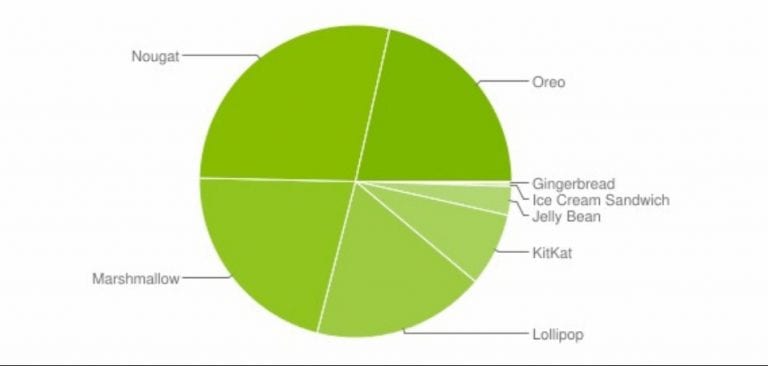Statistics from not so long ago have shown that 72% of iOS devices sold since 2014 are running iOS 12, while a further 21% are on iOS 11. Combined, 93% of iPhones and iPads are using an Apple mobile OS designed in the last two years.
Android distribution figures from October 2018 show that a worrying amount of devices are still on aging versions of Google’s mobile OS.
2016’s Android Nougat, is running on over 28% of devices, followed by last year’s Android Oreo releases (8.0 and 8.1) at roughly 21%. This year’s Android Pie doesn’t even register in the stats.
Android 6.0 Marshmallow from 2015 is still a thing on around 21% of devices, and Android Lollipop from 2014 is on approximately 18% – the Apple equivalents are iOS 9 and iOS 8.
The pie chart below will show you just how big this problem is.

Many thought that they could improve Android fragmentation, but now this is considered to be a bigger problem than before, and even though everything is fine at the moment, regarding Android’s open source merits and unique features over the idiot-proof usability of iOS, there is still a debate whether any Android device can actually run recent software.
The newest and biggest Google functionality now isn’t available to huge swathes of Android users, which is the center of the problem with Android fragmentation.
The excitation around next year’s big Samsung releases, the Galaxy S10, and Galaxy X, which will likely run the recently announced Snapdragon 855 chipset from Qualcomm is also happening at the moment.
It is believed that the both will be exceptional, more on Galaxy X, which could possibly be innovative – phones with loads of power and the modern specs, but the Android problem will unquestionably continue.
The iPhone 11, on the other hand, is practically assured to come with the latest version of iOS. It will block a drastic rebrand by Apple, and this will be iOS 13.
Considering all the facts, it is almost clear that the winner of this fight is iPhone.
Source: www.trustedreviews.com
